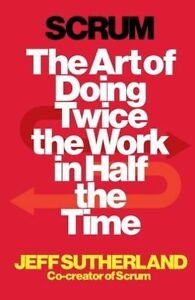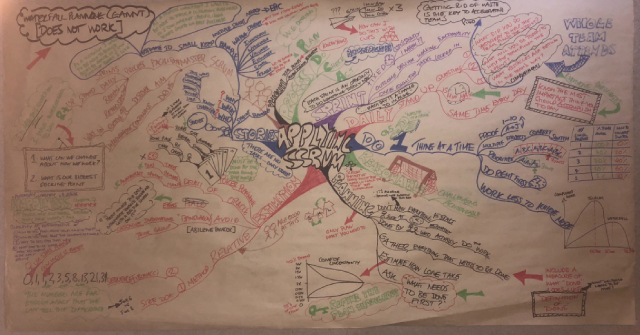
In This Episode…
I have been tentatively aware of SCRUM and agile working for a while now but have never really explored what it entails. Recently I was given a copy of SCRUM – The Art Of Doing Twice The Work In Half The Time by Jeff Sutherland by a good friend who was using it in his organisation to great effect.
I devoured it and got VERY excited by it. As a former full time project manager it sang to me like no other book on projects and team working has ever done. Coupled with my experiences of teaching leadership over the last 8 years, I got VERY excited by this book.
In this episode of the Profit Productivity Podcast, I outline the key principles of SCRUM as presented in the book and give my thoughts on them. I also share how I am going to be using this approach to put together my next personal productivity seminar series.
Episode Show Notes
00:16 – In this episode I partially review this book by Jeff Sutherland:

I say partially because I have just pulled out the key points I want to apply in getting the work done for my next project. Here is a picture taken of the Mind Map I captured when I went through the book:

02:41 – Why I recommend you explore SCRUM if you work with a project team.
03:02 – The impact and influence of W.E. Deming on SCRUM (Plan, Do, Check, Act).
03:21 – The concept of the team sprint.
04:22 – The Daily Stand Up Meeting – what it is, the questions they ask and why it is kept as short as possible.
05:55 – The ideal size for a SCRUM team.
06:17 – My favourite chapter in the book called “Waste Is A Crime”.
06:51 – Why you should only ever focus on one thing at a time and the folly of being stretched across multiple projects (it’s called context switching).
07:18 – The shocking impact of context switching when trying to work on multiple projects (it’s incredible how much time is wasted switching between projects).
08:39 – The Importance of getting things right first time round and the eye watering figure of how long it takes if you leave it to fix it later.
10:21 – Why working less means you actually can achieve more – the law of diminishing returns coupled with the importance of getting it right first time.
11:08 – The SCRUM approach to planning – its different to anything I’ve seen before in the realm of project management.
11:54 – Why the planning should be done by the people actually doing the work.
13:07 – People are just not good at estimating how long something will take to do. It’s a problem but here’s how to overcome it.
14:41 – How to use the Fibonacci series to help in estimating the size of a task (not how long it is going to take) and playing “Planning Poker”.
16:58 – How a SCRUM team’s target at the end of each sprint is to produce something that works that can be demonstrated to the customer.
17:24 – the concept of establishing the team’s “velocity” to help in ore accurately estimating project completion timescales.
18:30 – The role of the Scrum Master in the team sprints, daily stand ups and retrospective meetings.
19:09 – the creation of the project backlog (list of things to be created/achieved) using stories (who, what and why).
21:50 – How I’m applying SCRUM to my own project.
23:46 – Examples of stories I am using in my project.